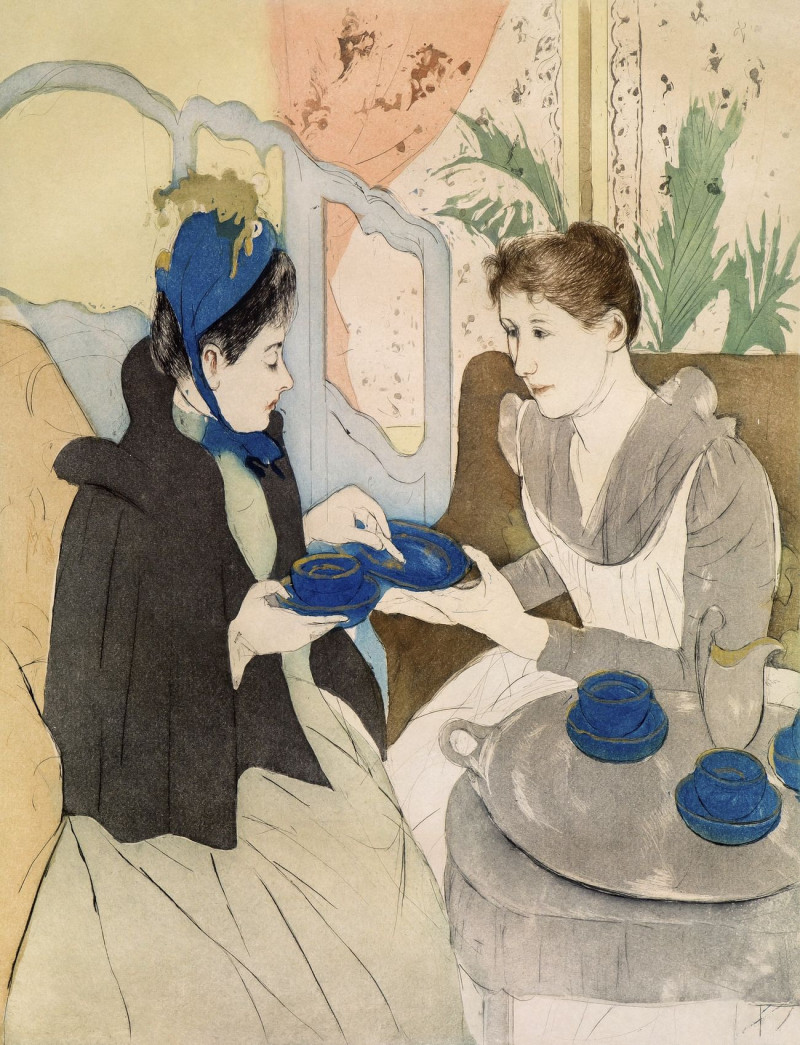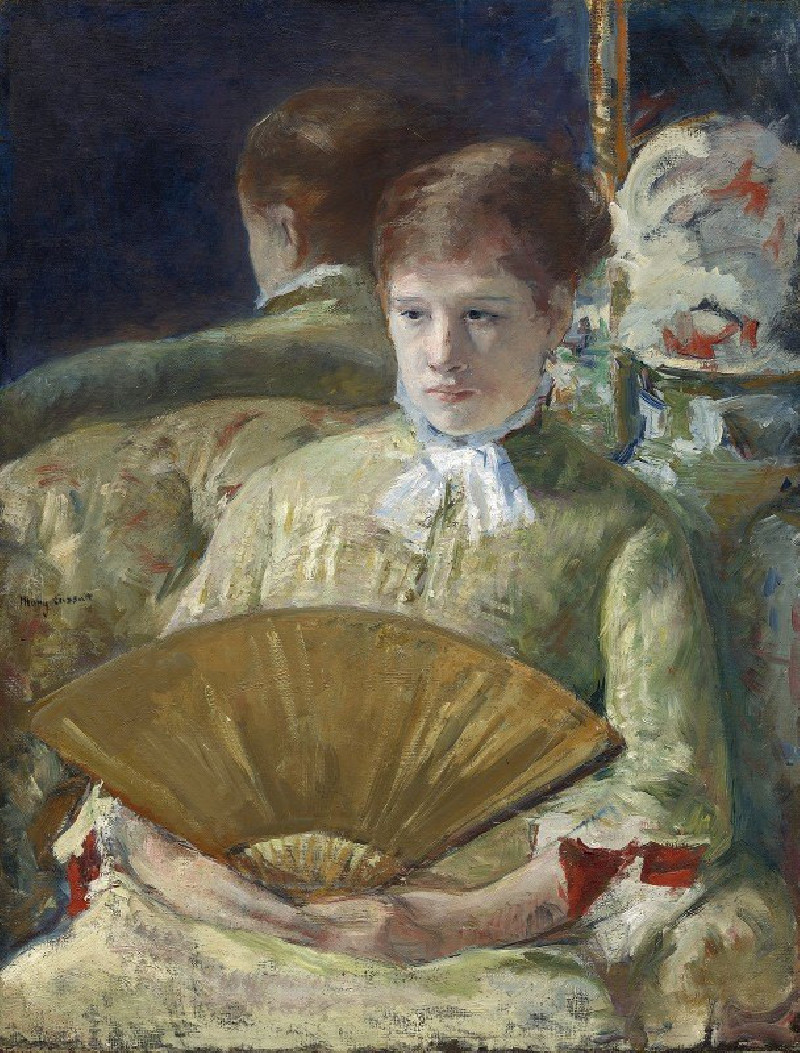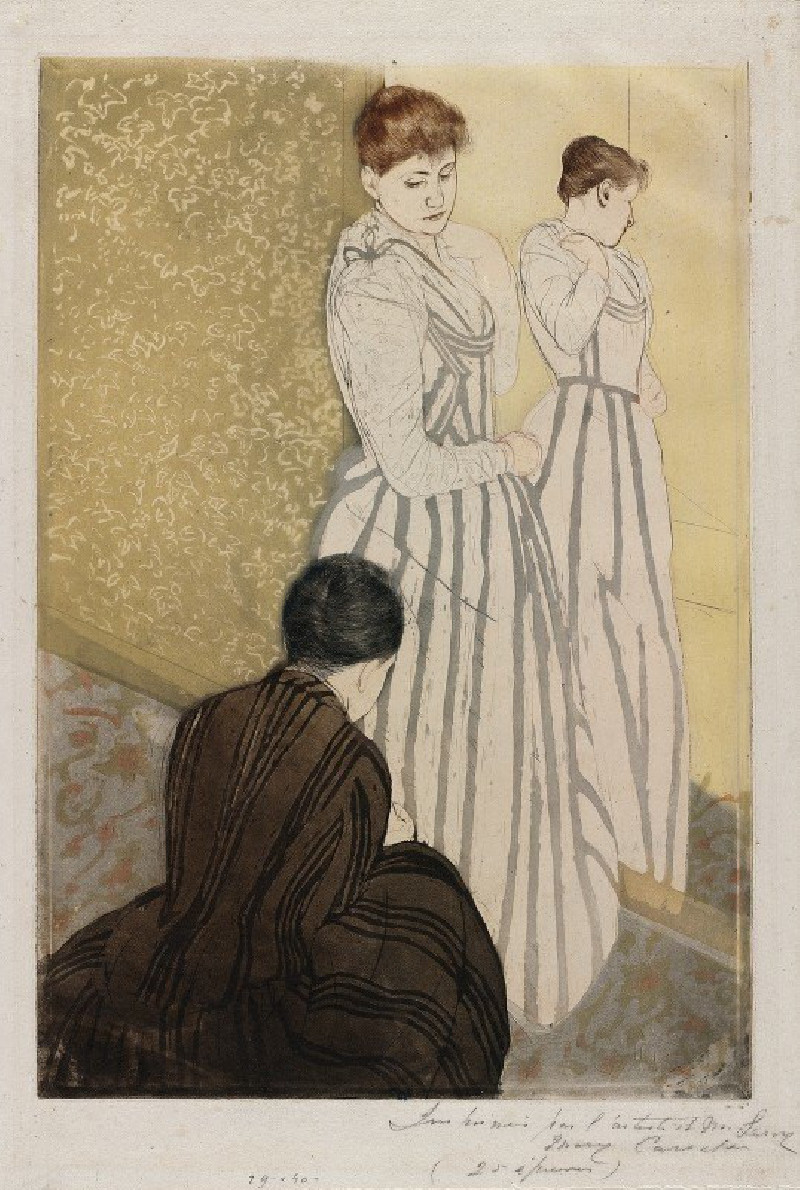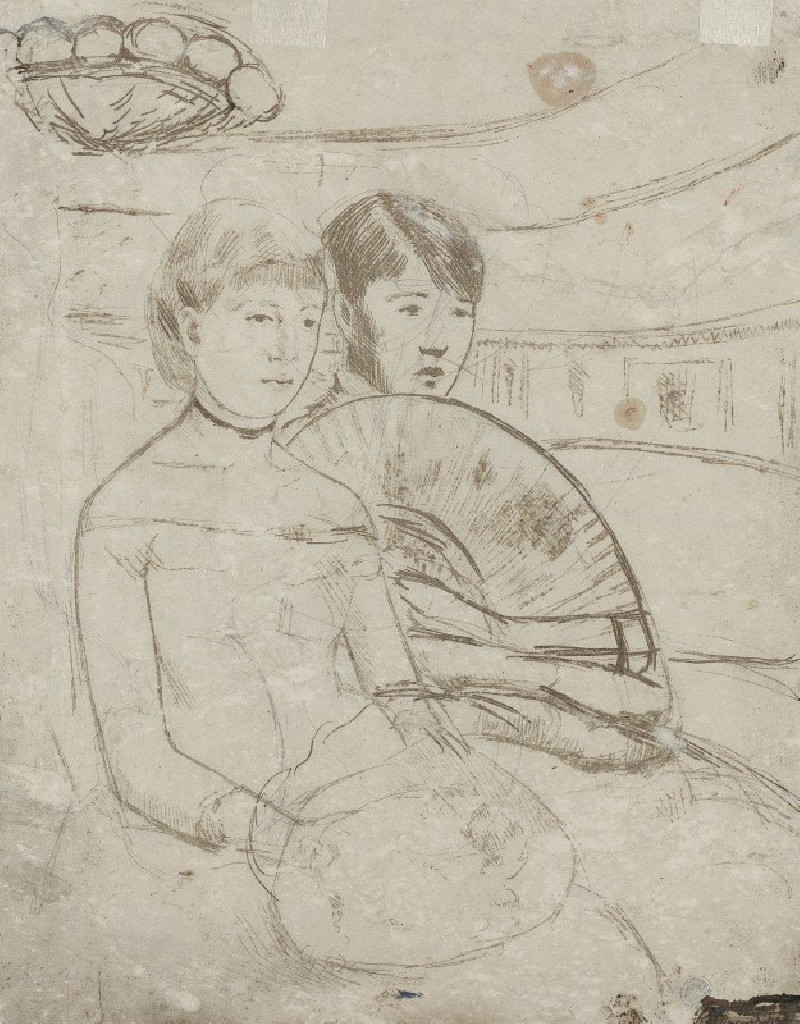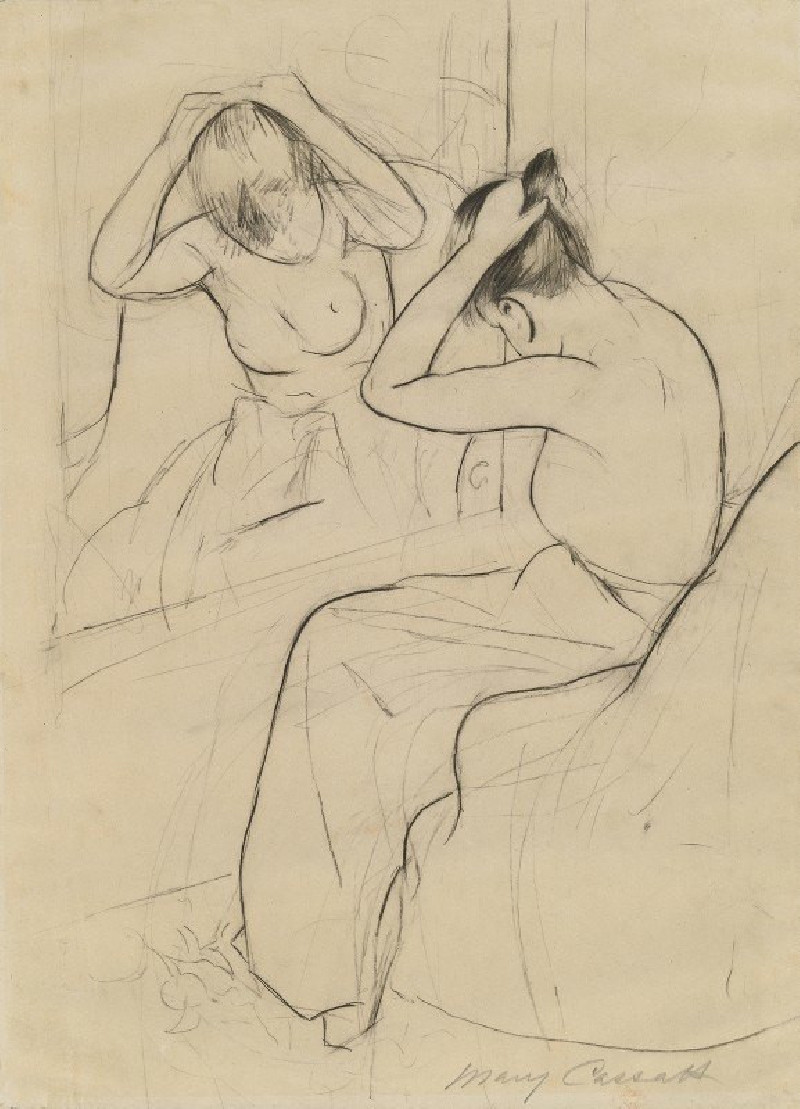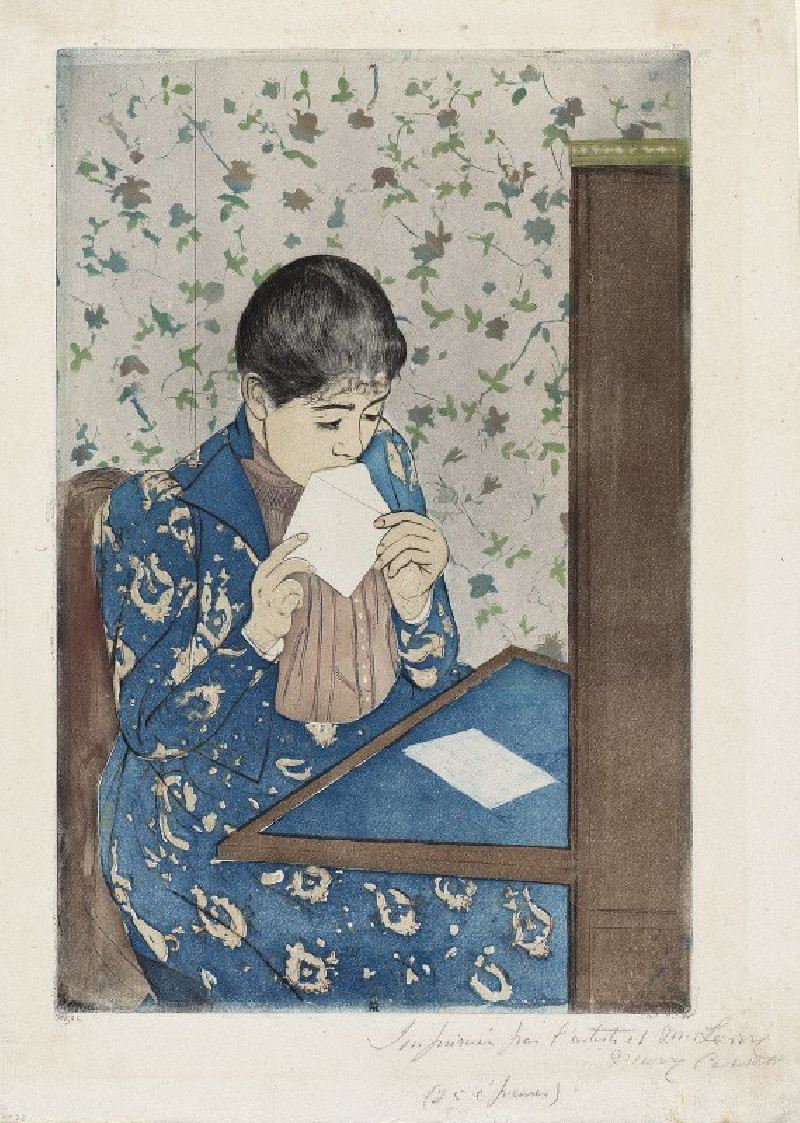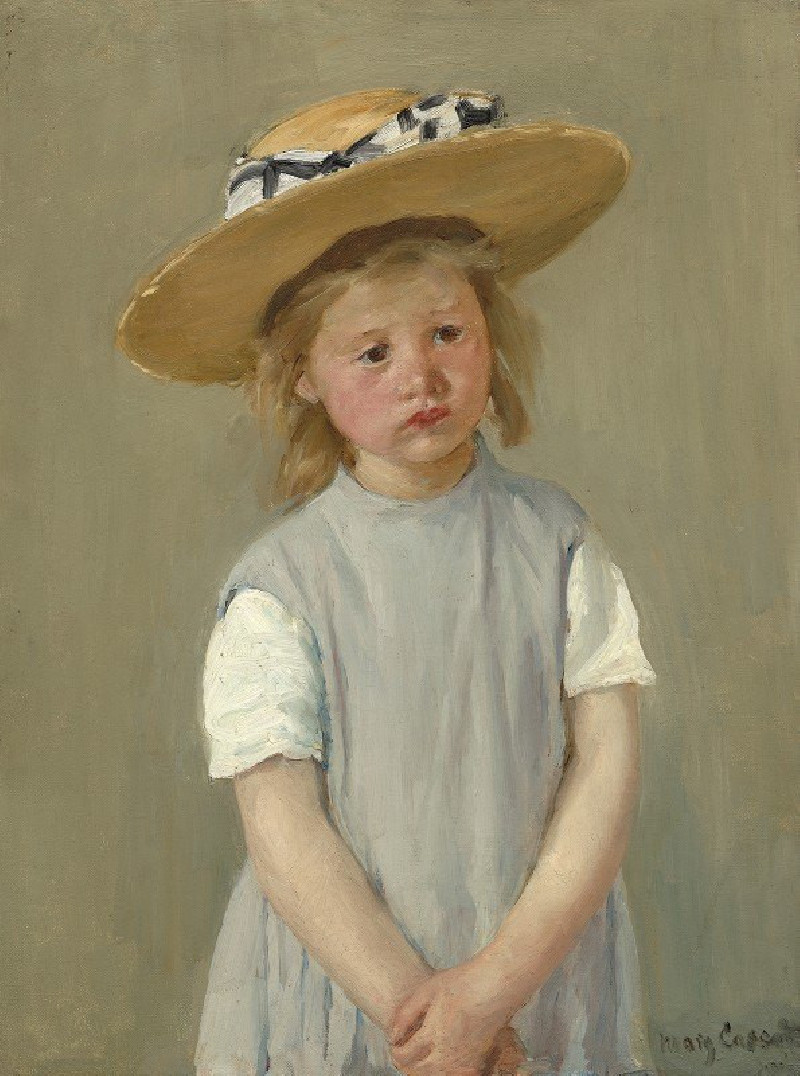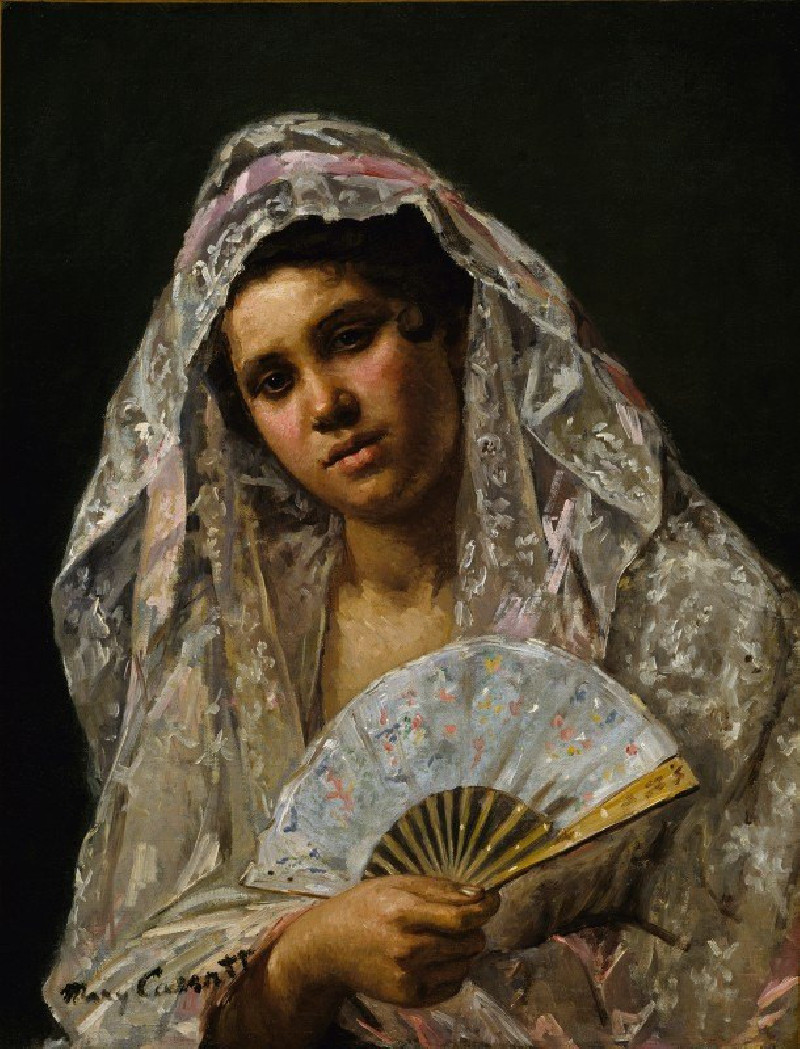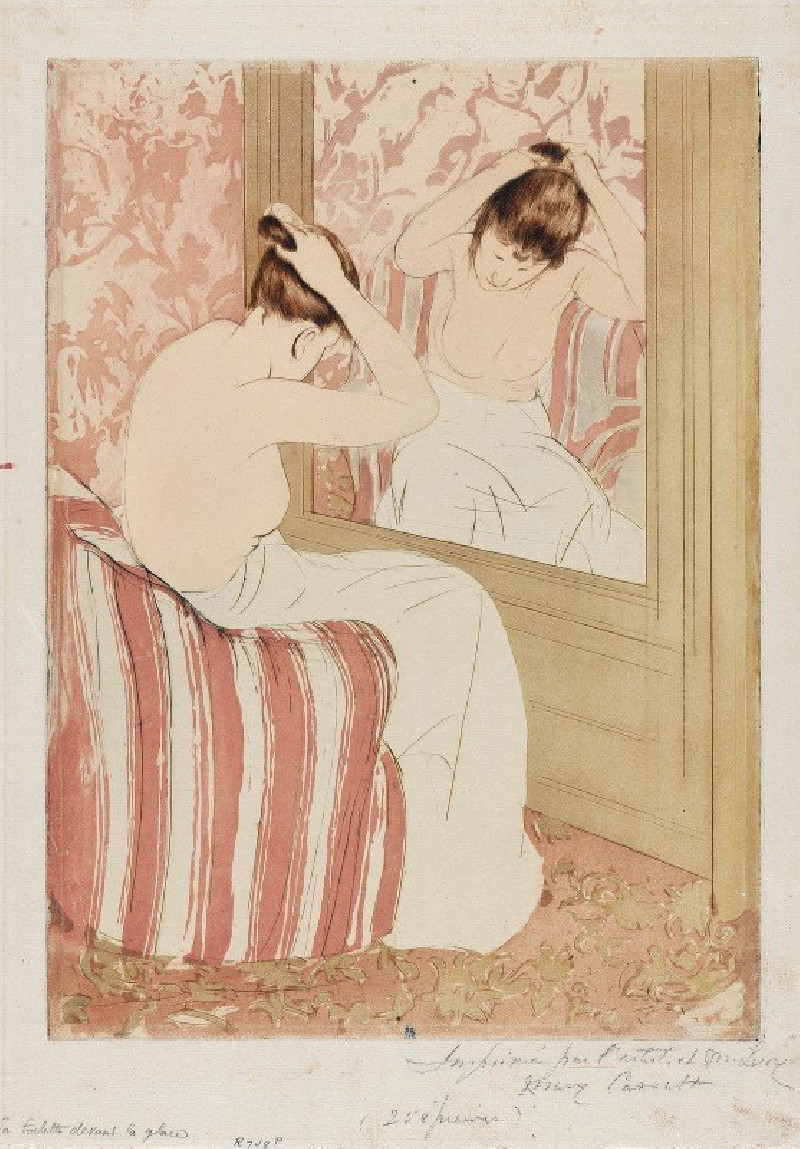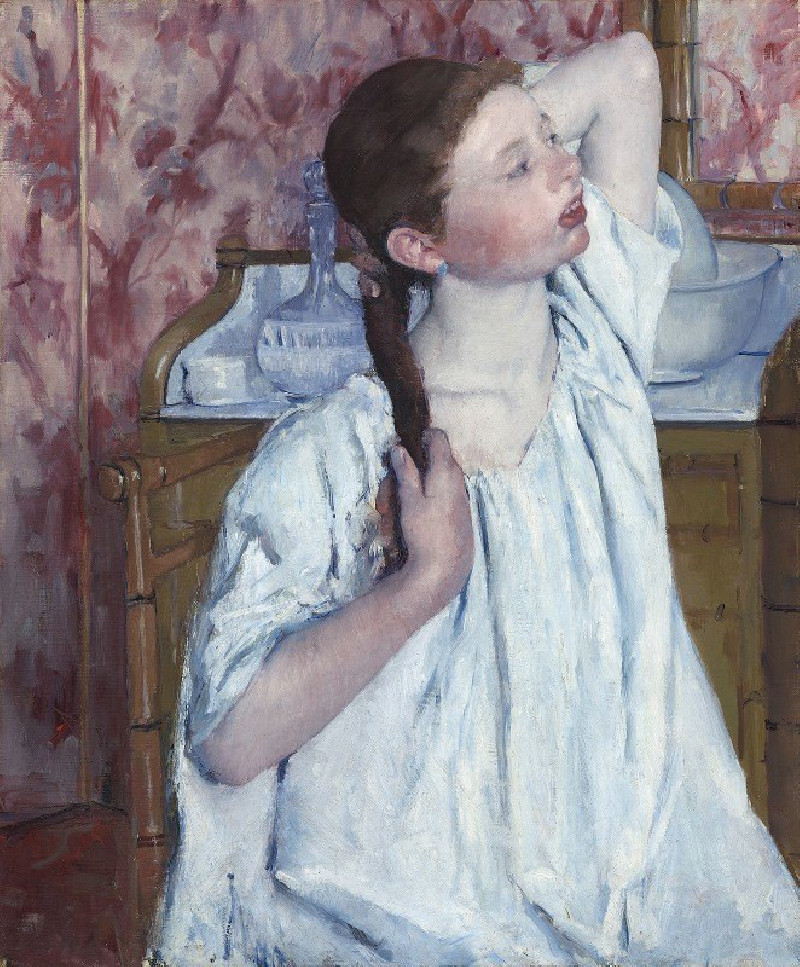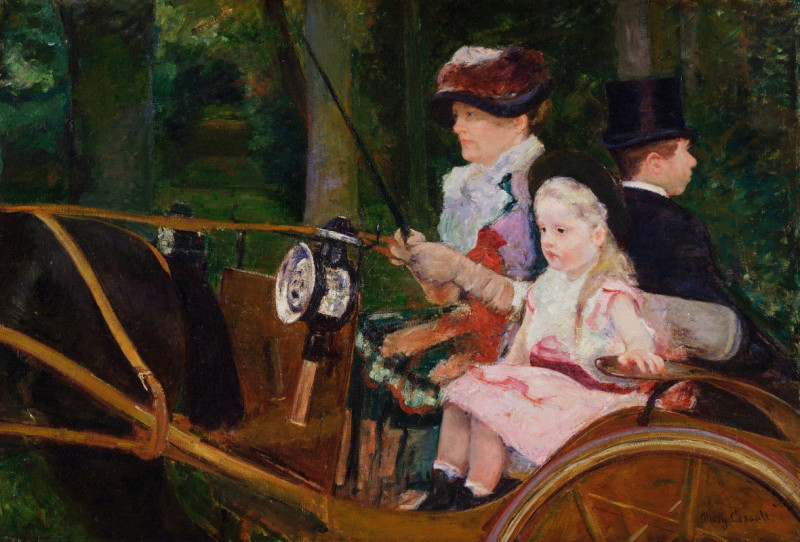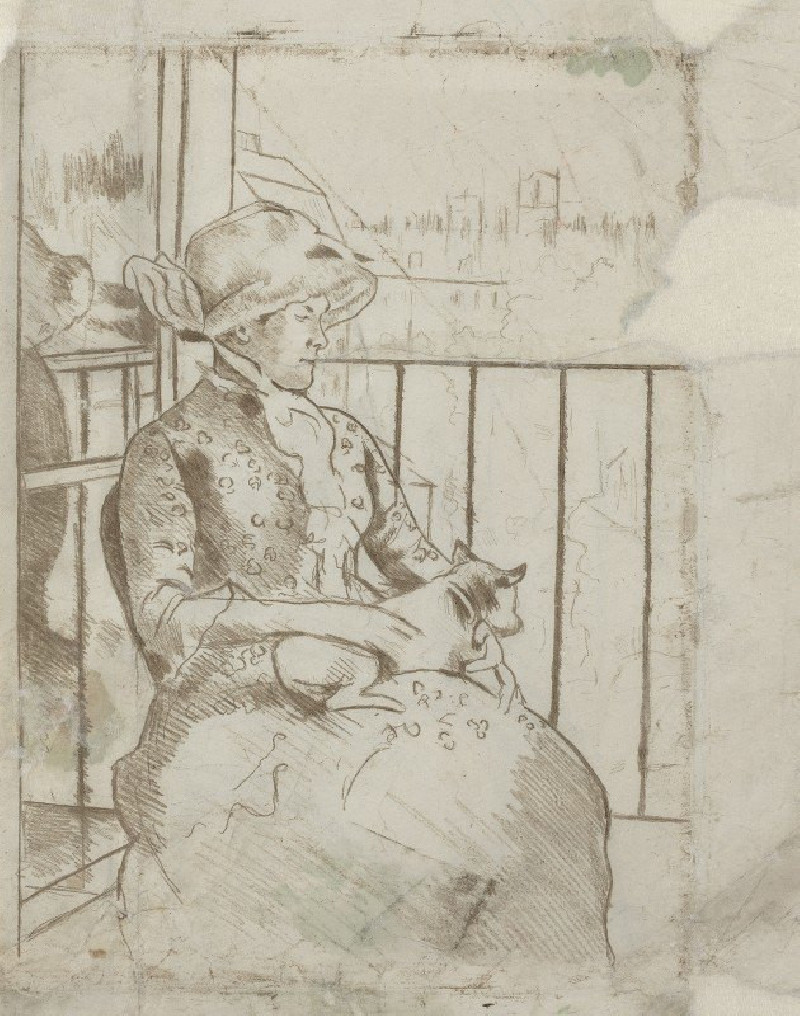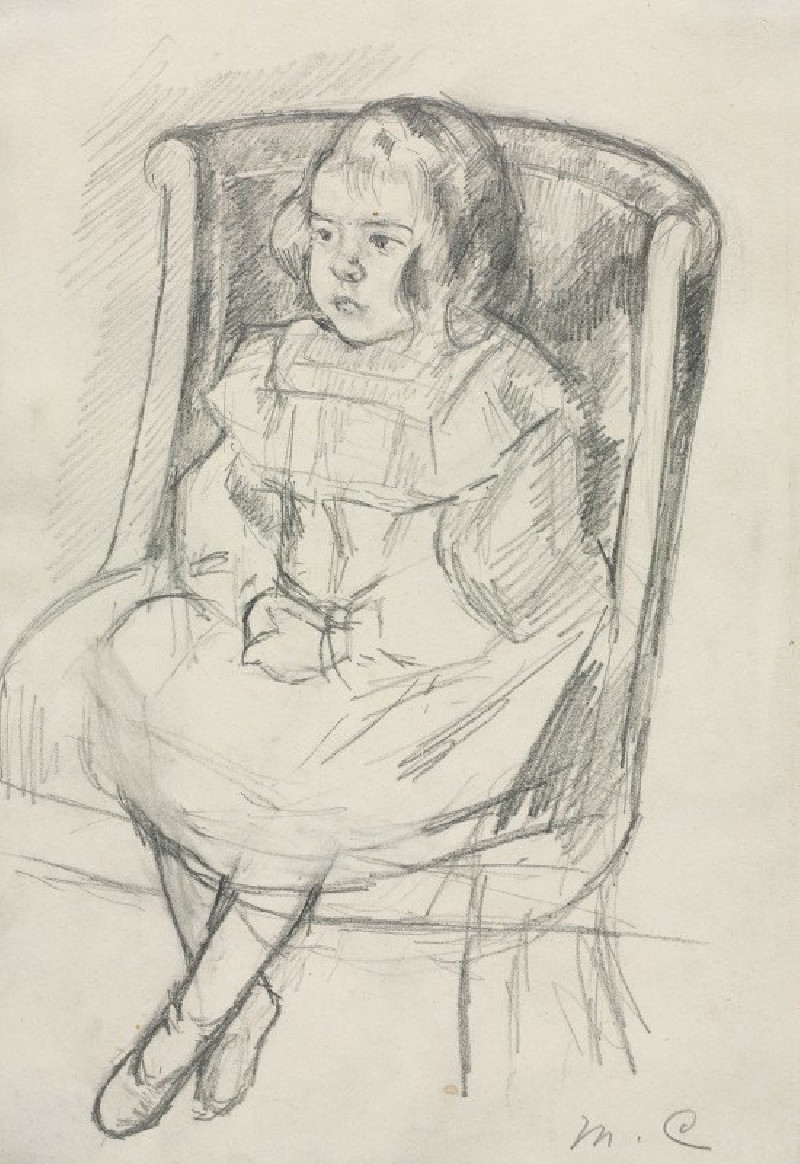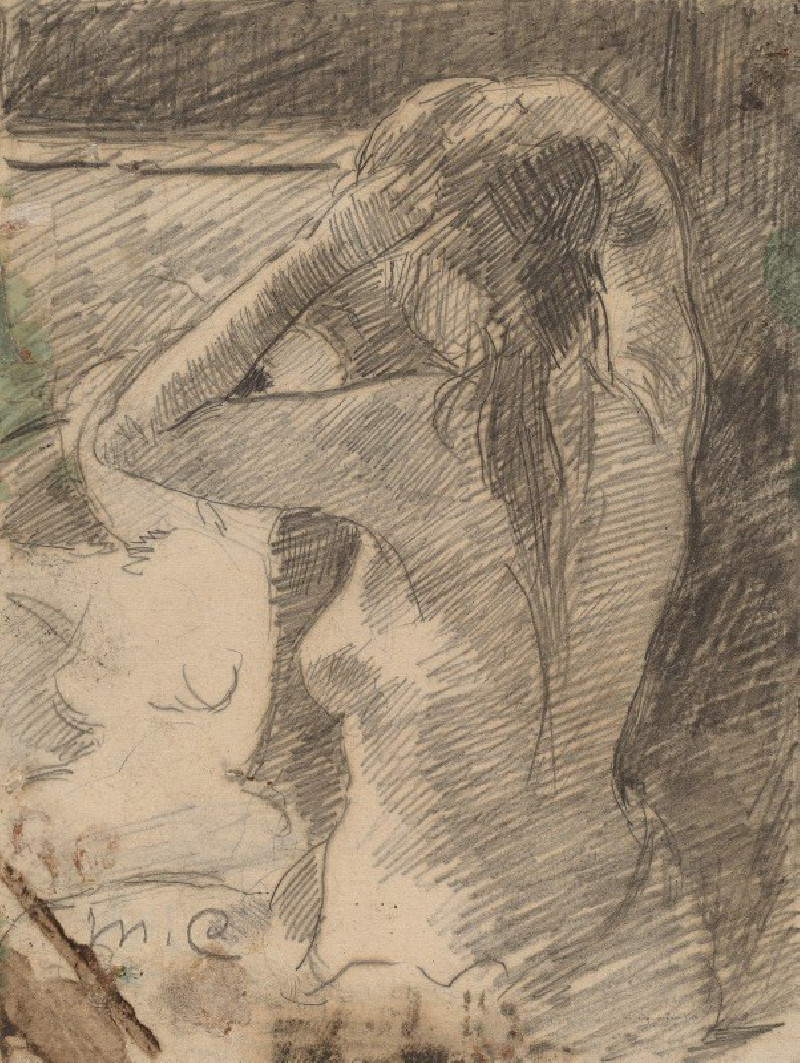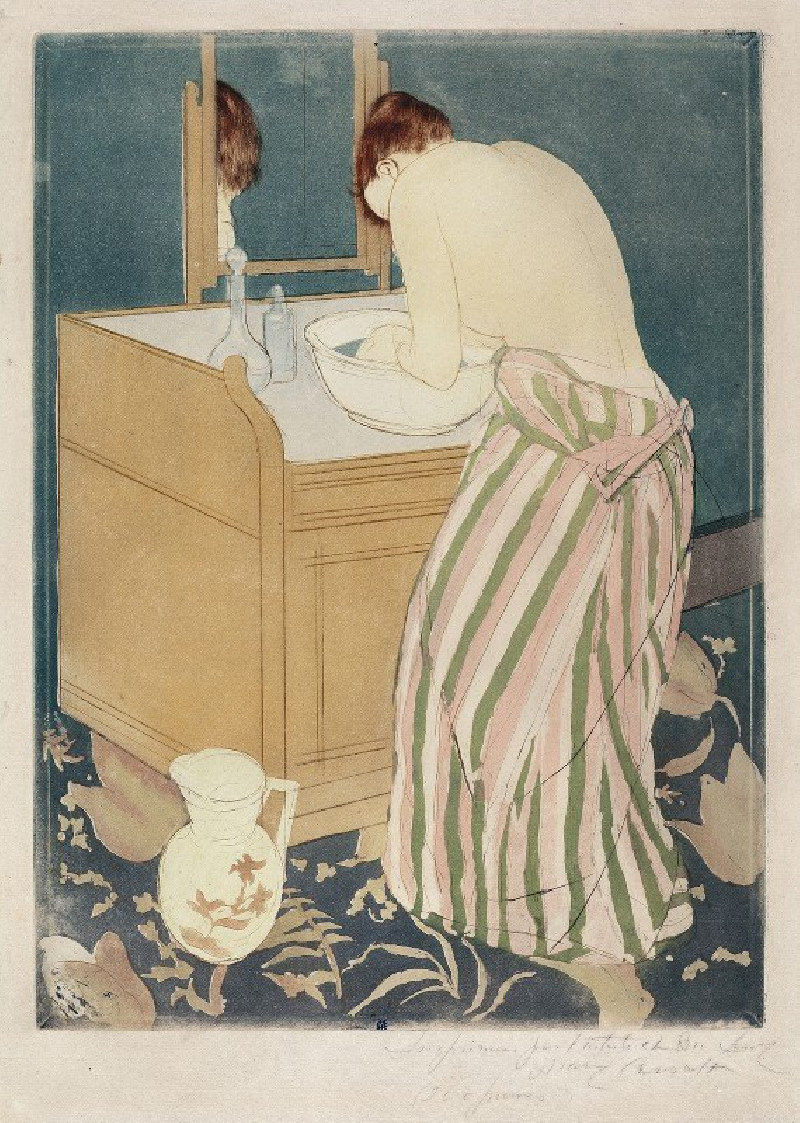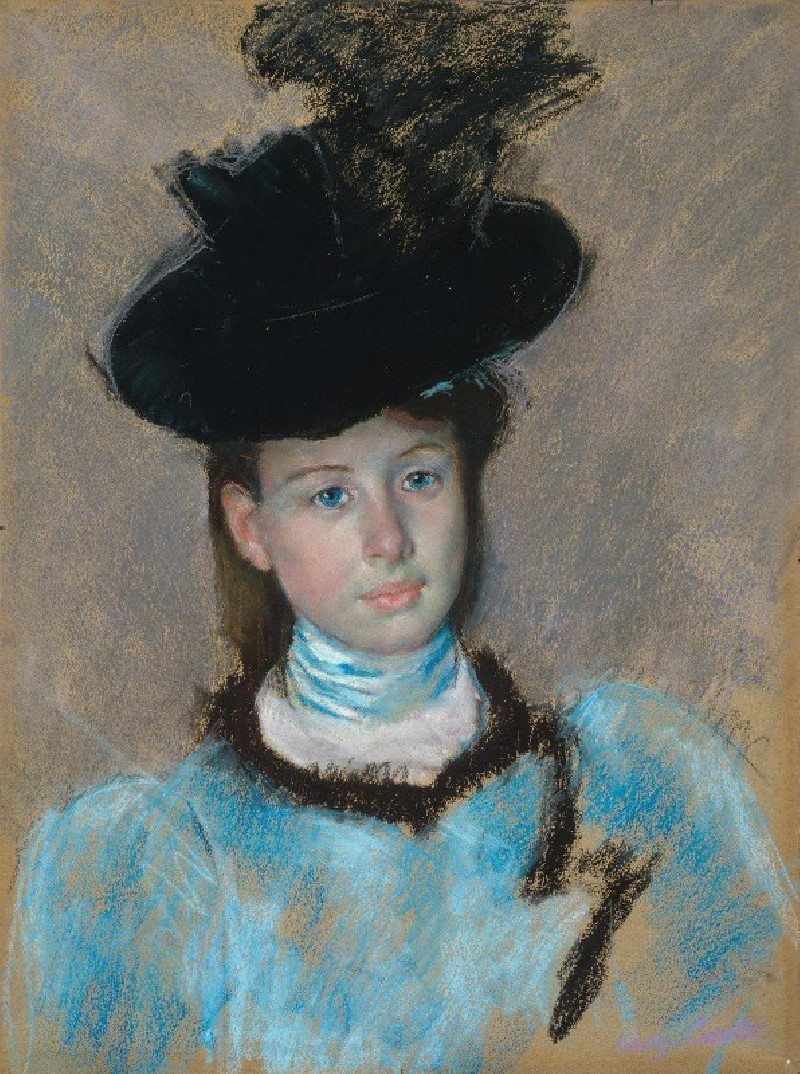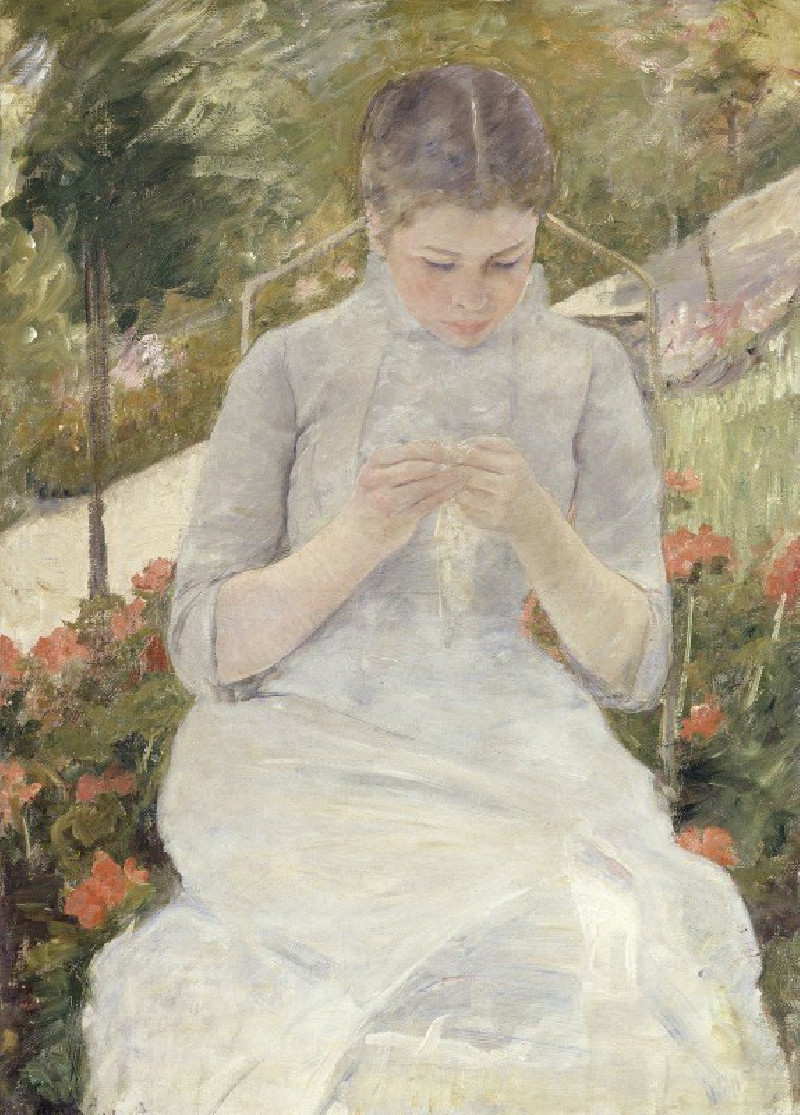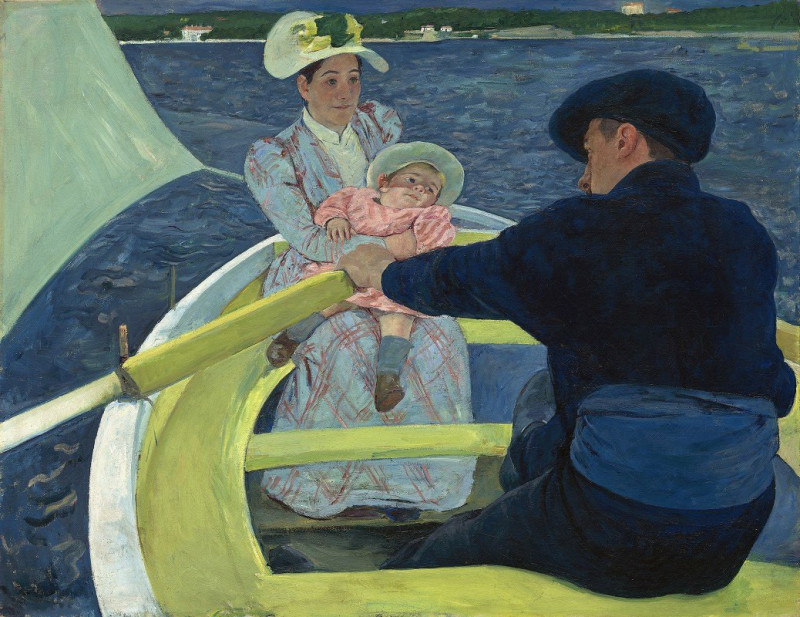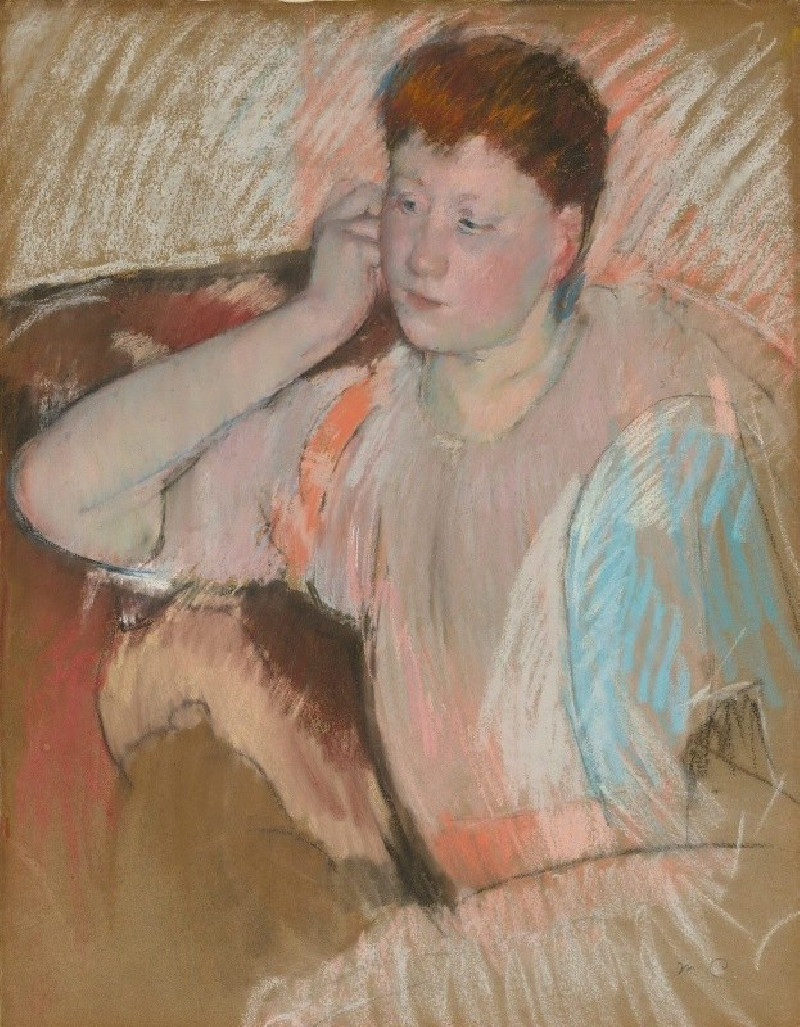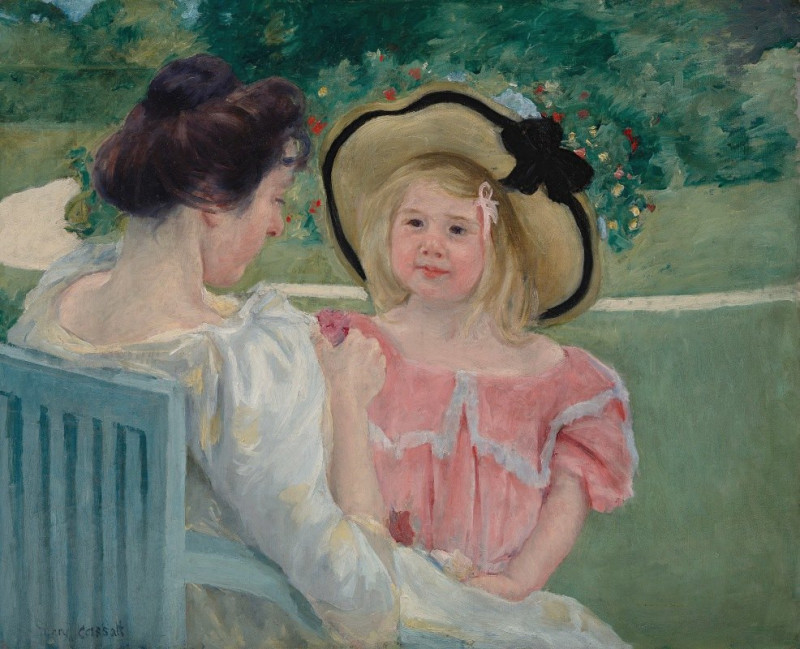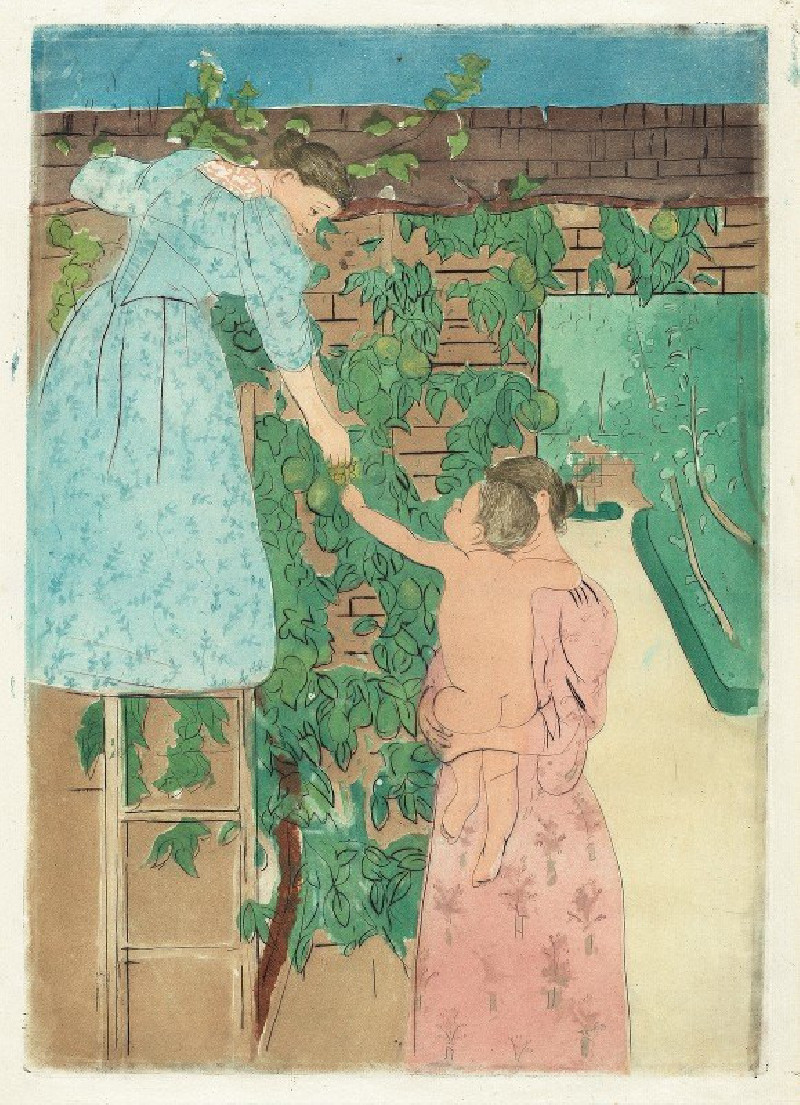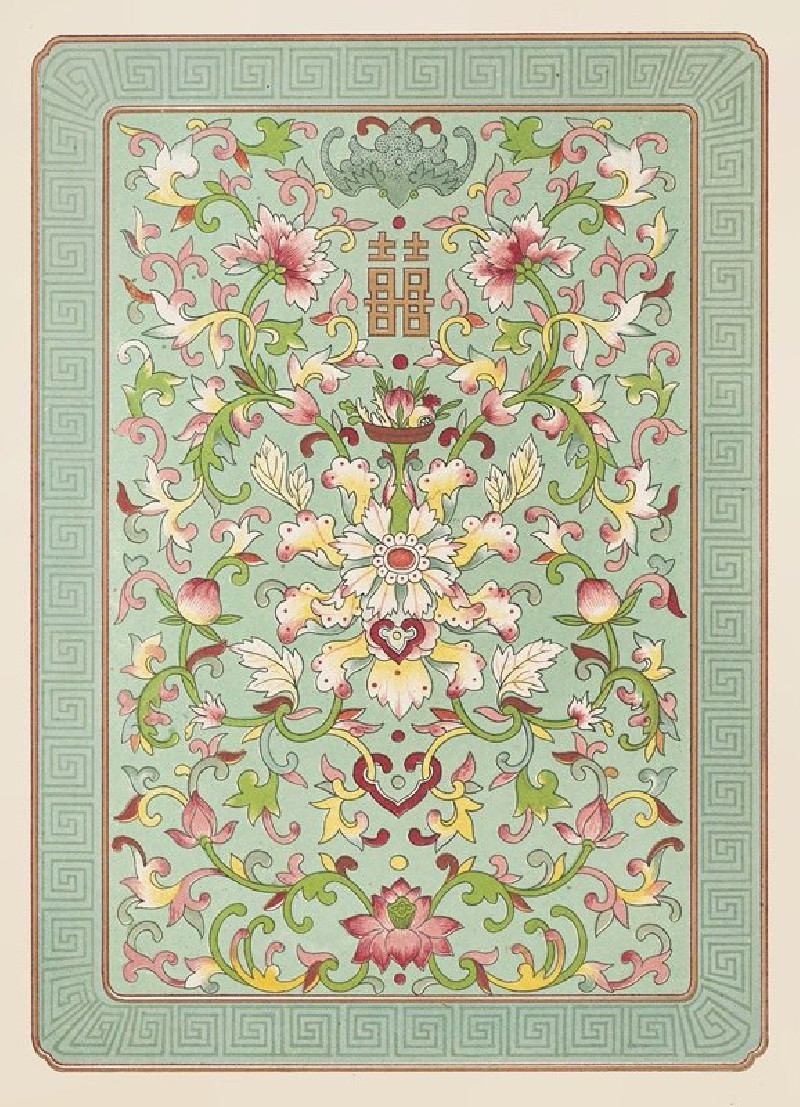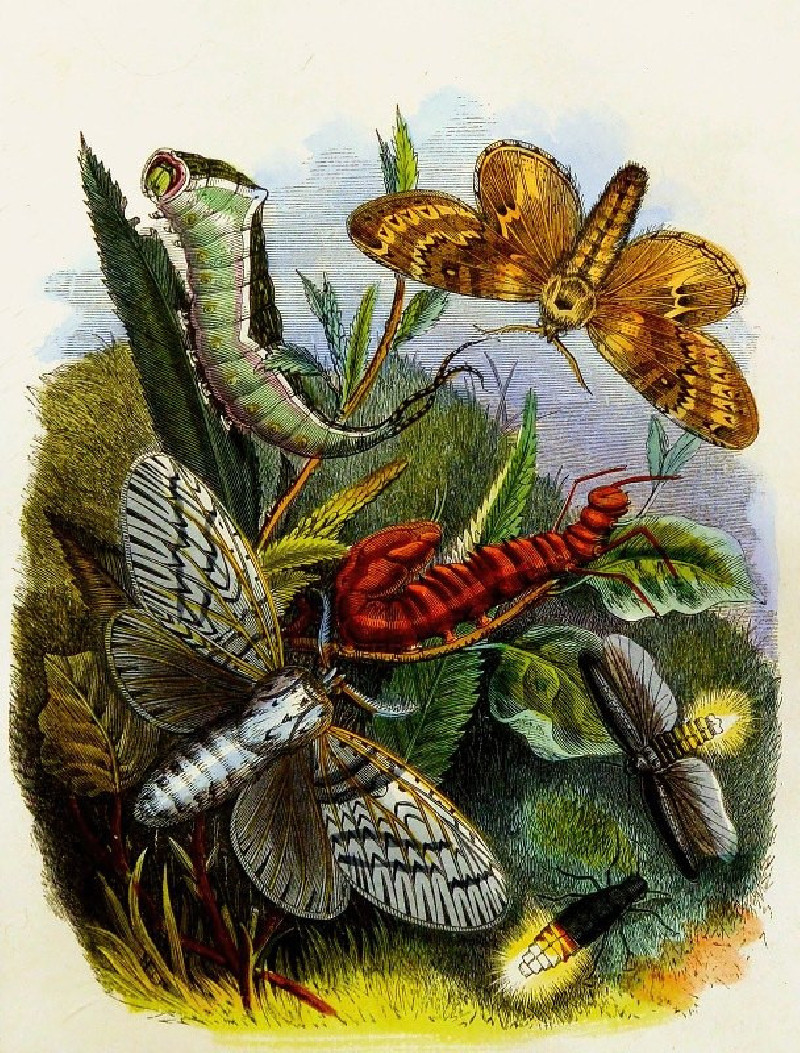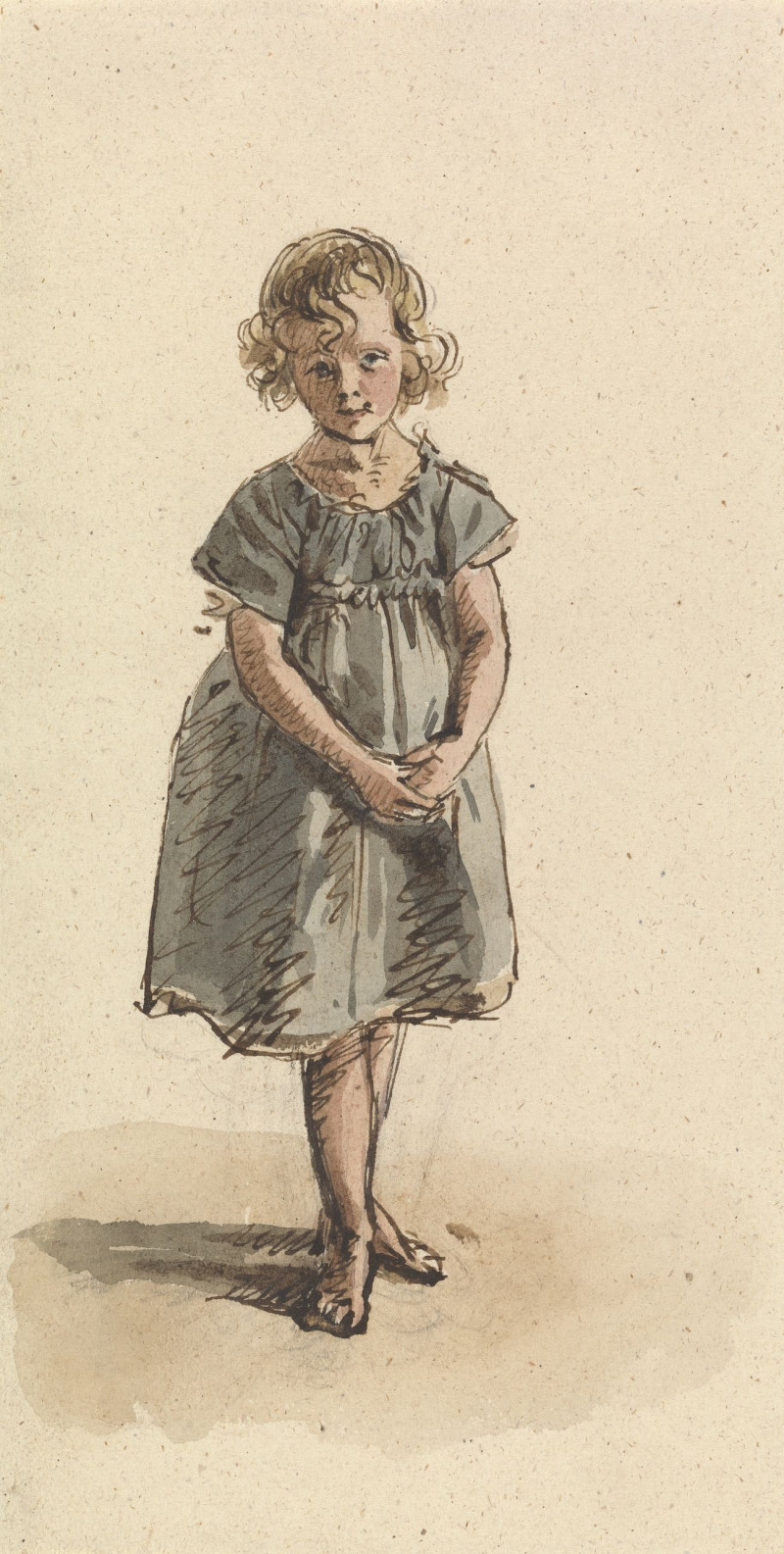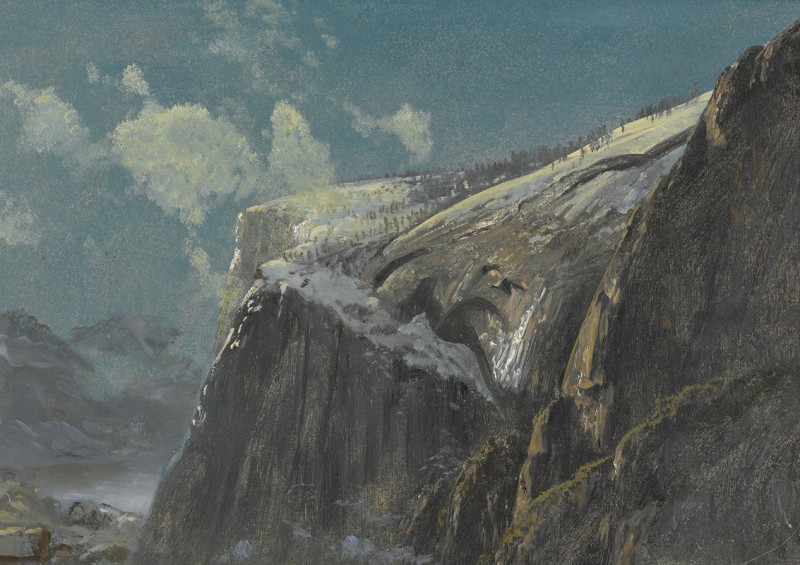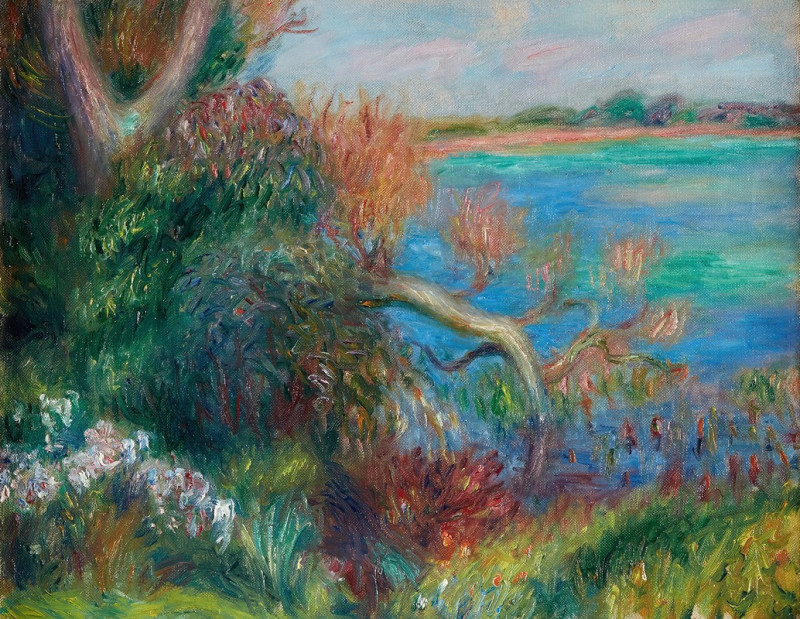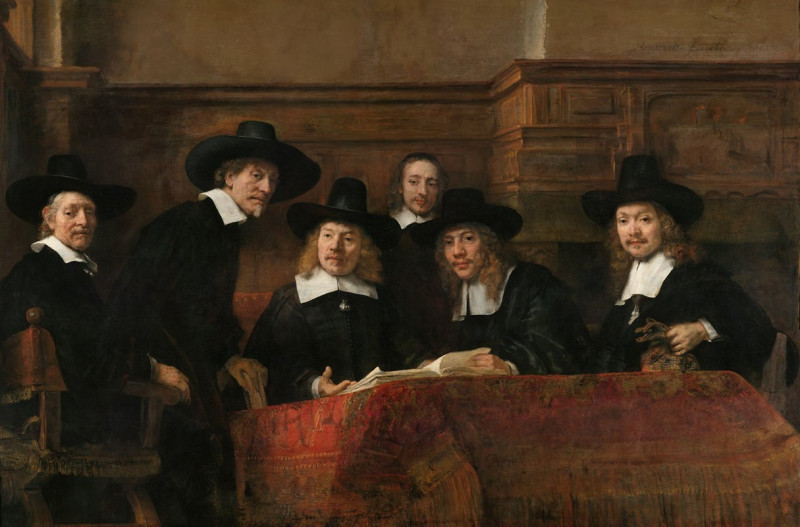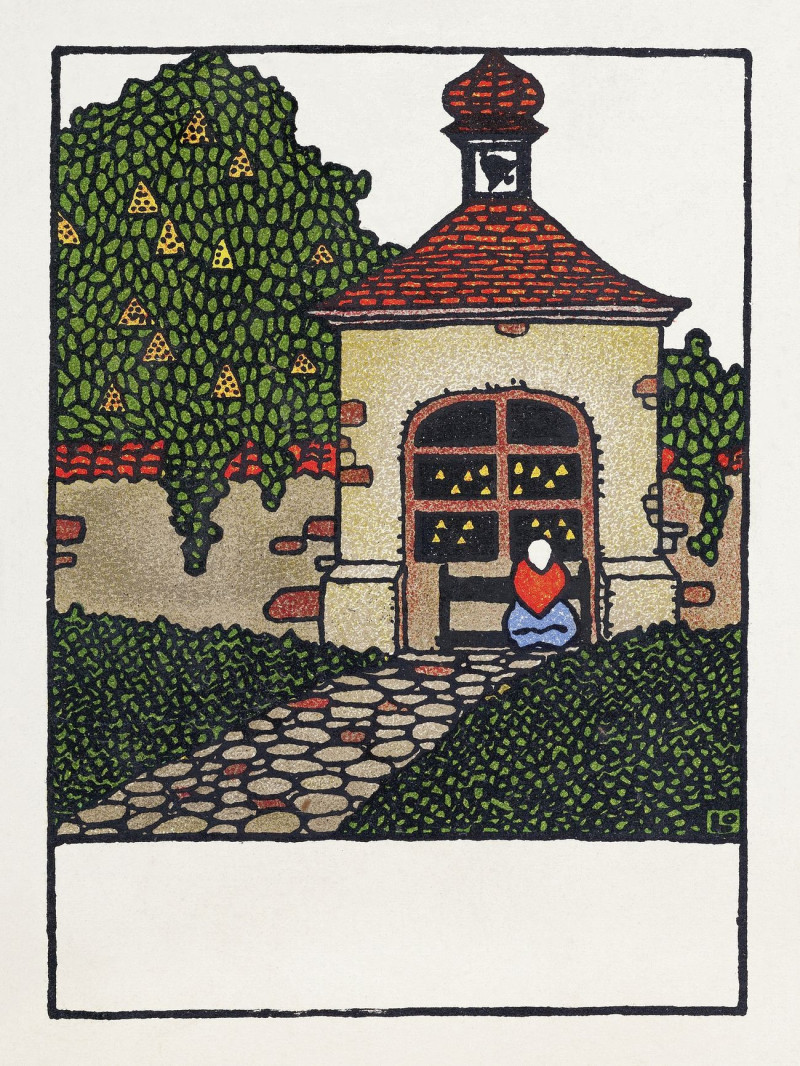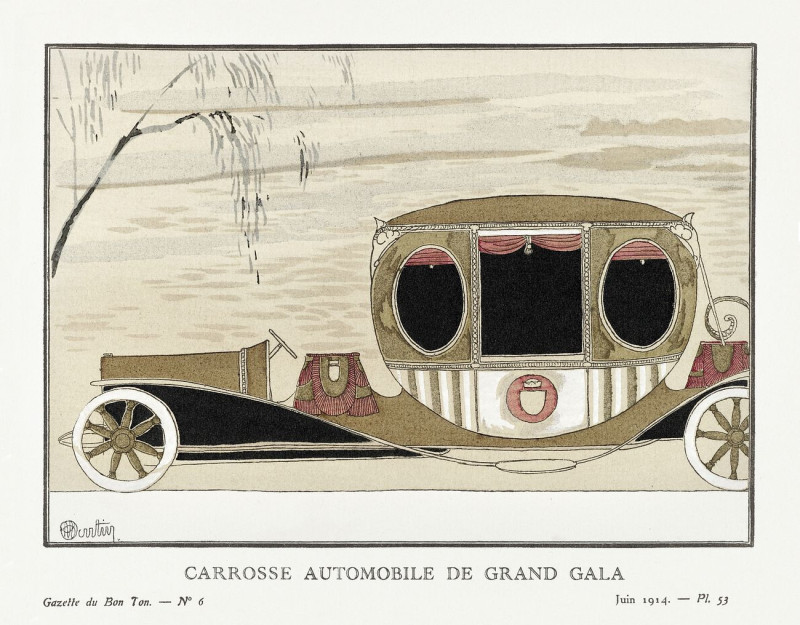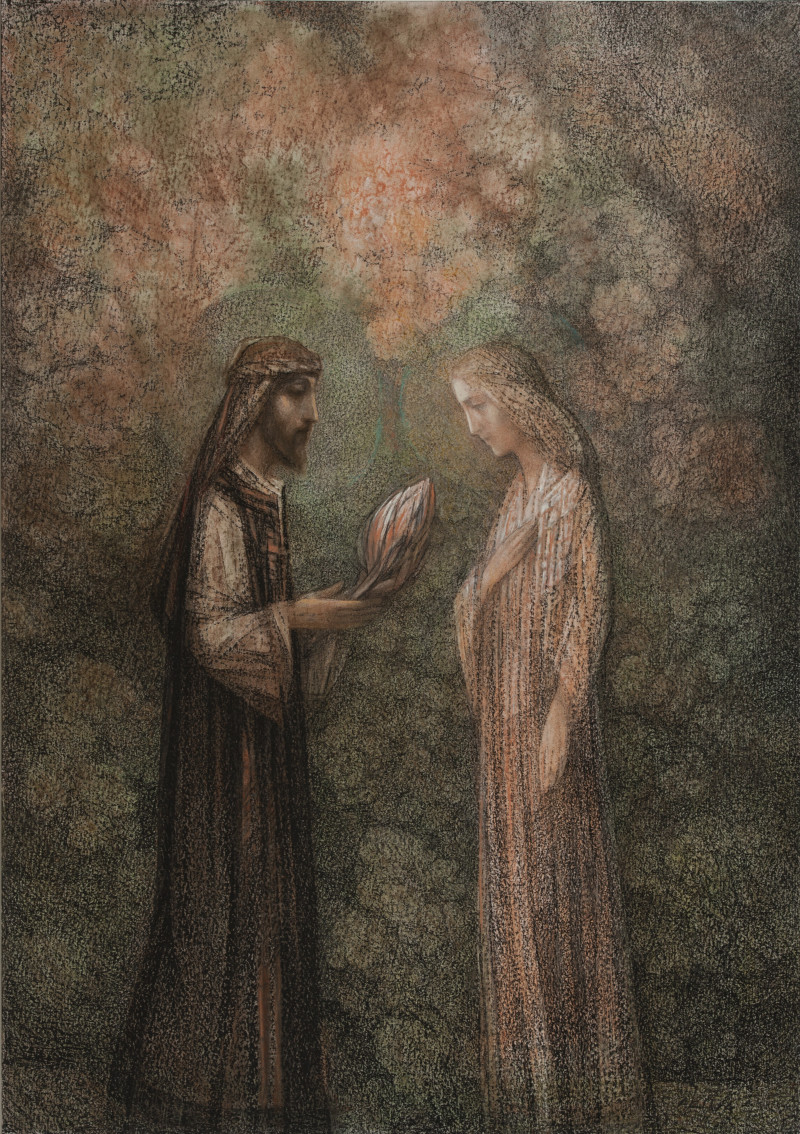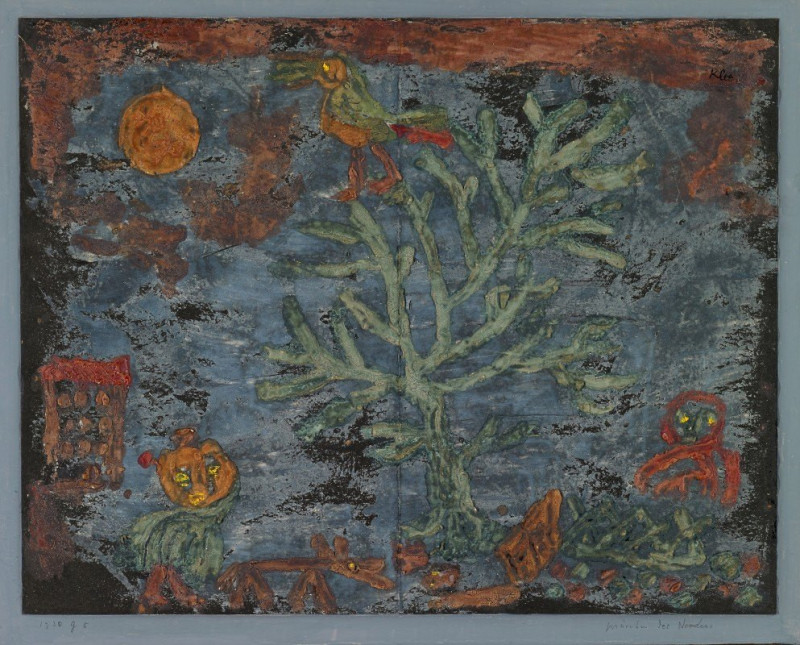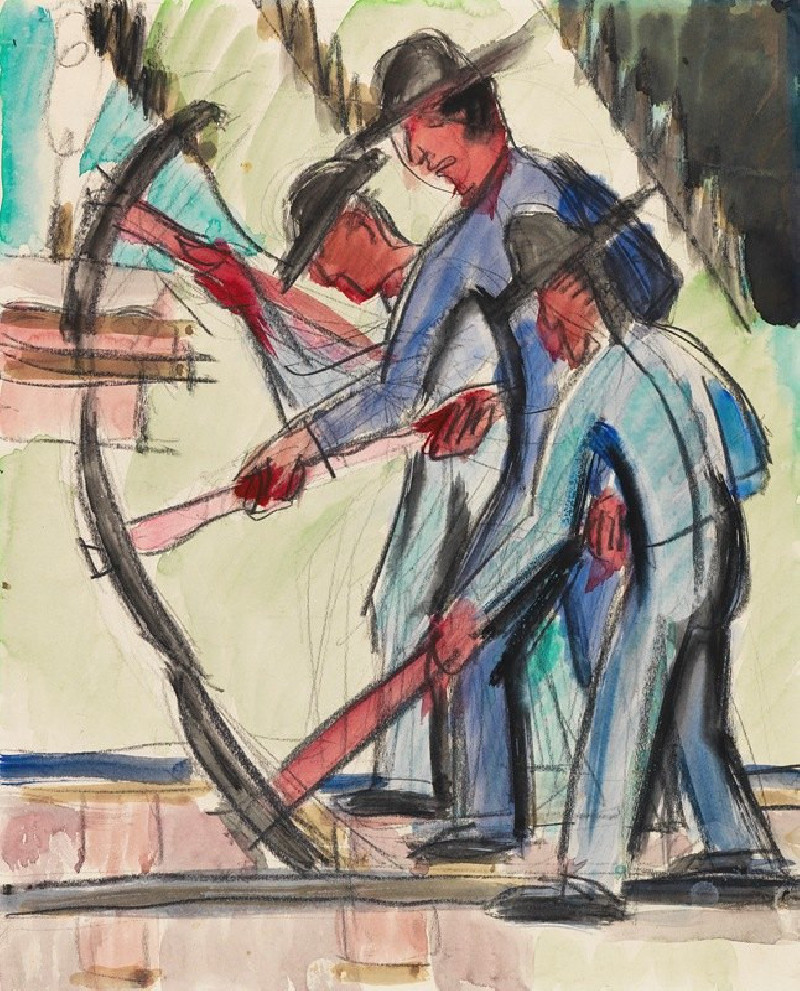Afternoon Tea Party
Technique: Giclée quality print
Recommended by our customers
More about this artwork
In the painting "Afternoon Tea Party" by Mary Cassatt, you witness a serene and intimate moment shared between two women during a tea time. The setting is likely an elegantly furnished room, suggested by the delicate floral wallpaper and a large, ornate window frame that captures part of a chair and background foliage, contributing to an air of quietude and refinement.The two female figures are engrossed in the gentle activity of serving and receiving tea. The woman on the left, adorned in a dark jacket with a striking blue hat and scarf, delicately hands over a blue teacup and saucer to her companion. The recipient, dressed in a softer, more neutral-toned blouse with ruffled sleeves, attentively receives the teacup with both hands, indicating a moment of peaceful engagement and perhaps quiet conversation between the two.The use of color and form is subtle yet effective. Cassatt uses a restrained palette that communicates a sense of calm and demureness, fitting for the scene’s genteel setting. The attention to detail in the women’s attire and the soft rendering of their faces highlight their expressions and enhance the overall feel of leisurely elegance.Overall, this painting beautifully captures a slice of everyday life, emphasizing feminine companionship and the small, cherished moments of social exchange, typical of Mary Cassatt’s work that often celebrated the private lives of women with sensitivity and depth.
Delivery
Returns
Mary Stevenson Cassatt was an American painter and printmaker. She was born in Allegheny City, Pennsylvania (now part of Pittsburgh’s North Side), but lived much of her adult life in France where she befriended Edgar Degas and exhibited with the Impressionists. Cassatt often created images of the social and private lives of women, with particular emphasis on the intimate bonds between mothers and children.
She was described by Gustave Geffroy as one of "les trois grandes dames" (the three great ladies) of Impressionism alongside Marie Bracquemond and Berthe Morisot.In 1879, Diego Martelli compared her to Degas, as they both sought to depict movement, light, and design in the most modern sense.

